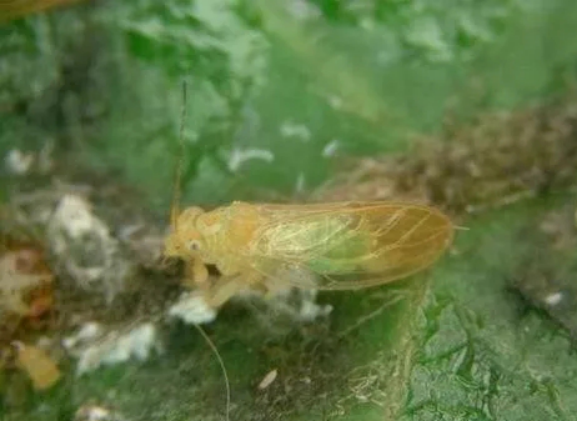Summer drifting "snow", who is doing the trick? In the hot summer, whenever the wind rises, some white flocculent things will float on the sidewalk trees on the side of the road, like snow, falling on the top of the car on the side of the road, the ground, sticking to the clothes, people and bodies accidentally touch the flocculent, not only slimy and smelly, but also difficult to clean, seriously polluting the surrounding environment, affecting the appearance of the city. So, what exactly are these snowflake-like flocs? Let's find out today!
[1] Distribution and hazards
These "white snows" are actually secretions of the pest wood lice that parasitize the green trees. Wood lice mainly parasitize on the back of the leaves of the green tree and on the young branches of the young branches, although the body is small, the mouth is like a needle tip, can be deeply inserted into the leaves, branches to absorb nutrients in the tree, destroy the transport tissue of the tree. The wood lice then excrete feces and urine on branches or leaves, and these secretions stick together to form this white flocculent. These excrements look like cotton wool, and it can affect the photosynthesis of the tree, causing the foliage to gradually yellow. In severe cases, it will also cause the branches to dry up and necrosis. Mainly distributed in North China, East China, Central China, Shaanxi, Gansu and other places.
[2] Morphological characteristics
Adult worm, yellow-green body, body length 4 to 5 mm, wingspan of 13 mm, the tip of the head is significantly sunken, compound eye hemispherical protrusions, reddish brown. Three eyes, arranged in an inverted "pin" glyph. Antennae 10 segments, 4 to 8 segments of the upper part of the dark brown, the last two segments black, the top of the two manes, the anterior thorax dorsal plate arched, the anterior and posterior edges of the black brown. Male adults are 4 to 4.5 mm long, with 7 segments visible on the dorsal plate of the abdomen and 6 segments in the web.
The egg is oblong,ovoid, slightly pointed at one end, 0.7 mm long, pale yellow or yellowish brown at first birth, reddish yellow near hatching, and red eye spots are visible.
[3] Occurrence law
The insect occurs in 2 generations per year, overwintering on the branches with eggs, and the eggs begin to hatch at the end of April and early May of the following year, and the nymph period is more than 30 days. The first generation of adults feathers in early June and the second half of June, while the second generation of adults feathers in early and mid-August. Adults need to be nutritionally replenished after feathering to lay eggs. The first generation of adults lay mostly eggs on the back of the leaves, which hatch after about two weeks; the second generation of eggs are mostly laid on the shady side of the main branch, at the bifurcation of the lateral branches, or in the rough skin of the main lateral branches. The development is very uneven and there is a phenomenon of generational overlap. Both nymphs and adults are gregarious, often with more than a dozen to dozens of heads living in groups such as the back of the leaf. Nymphs live in white waxy matter and walk quickly; adults have poor flight ability and strong jumping ability.
[4] Comprehensive prevention and control
1. Chemical control, when large occurrences, 10% aphid net powder 2000 ~ 2500 times liquid can be taken. 2.5% imidacloprid 1000 times liquid or 1.8% avermectin 2500 to 3000 times liquid.
2. Pay attention to the protection and utilization of parasitic bees, ladybirds, grasshoppers and other natural enemy insects.
